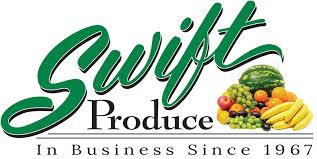The packaged salad category is evolving quickly as consumers seek freshness, flavor, convenience and sustainability. Companies across the supply chain are responding with new flavors, innovative packaging, extended shelf life and strategies to meet the demands of health-minded shoppers.
From texture-driven innovation to plant-forward meals inspired by fast casual restaurants, industry leaders are leaning into changing habits and new opportunities to grow the category.
Meeting Consumers Where They Are
For Taylor Farms, delivering a satisfying salad experience means understanding what shoppers want at every stage of their health and wellness journey.
“We’re seeing a large group of consumers looking for wellness-based solutions,” says Charis Neves, vice president of product and innovation for Taylor Farms. “By diversifying our salad portfolio, we are working to ensure we have something for every consumer, regardless of where they are on their health and wellness journey. Texture is very important when it comes to eating vegetables, and delivering on flavor and taste makes it exciting for all consumers’ taste buds.”
This emphasis on both flavor and format is driving new product development, Neves says. Taylor Farms recently introduced mini chopped kits designed for smaller households, college students and grab-and-go consumers. These single-serving portions aim to reduce waste while making it easier for shoppers to incorporate leafy greens into daily meals. The company has also moved some of its organic products from plastic to fiber-based trays under its Earthbound Farm line to further reduce its environmental footprint.
Greenhouse-Grown Gains Ground
BrightFarms is seeing significant growth in demand for greenhouse-grown packaged salads.
“Ready-to-eat salad kits are particularly popular, growing 21% versus last year,” says Jess Soare, vice president of marketing for BrightFarms. “Consumers are becoming more educated about what they put in their bodies and are learning about the benefits of indoor-grown salads, including longer-lasting freshness, consistent quality, reduced environmental impact and greens grown without pesticides.”
BrightFarms is leaning into bold flavors and sustainability. Its Crunch Kits, featuring a peel-and-reseal film, use 35% less plastic than traditional clamshells and eliminate the need for extra dishes. Asian-inspired flavors, among the top trending profiles in the category, are driving flavor innovation. Additionally, Soare says a new bagged format uses 60% less plastic than trays, helping the company meet retailer sustainability goals while reaching new meal occasions.
Education is also key to consumer engagement. BrightFarms uses QR codes on packaging to connect shoppers with virtual greenhouse tours and other content that showcases how its salads are grown and why they’re different. The company’s proximity-based greenhouse network allows greens to reach shelves within 24 hours of harvest, extending shelf life and reinforcing its freshness story.
Culinary Inspiration and Data-Driven Strategy
For Dole Fresh Vegetables/Bud Antle, consumer trends intersect directly with product innovation.
“We’re seeing strong momentum in packaged salads as consumers look for fresh, flavorful and convenient ways to eat well,” says David Austin, vice president of marketing and innovation for Dole Fresh Vegetables/Bud Antle.
One factor influencing demand is the rise of GLP-1 medications, Austin says, which is driving interest in portion-controlled, nutrient-dense foods. Dole’s salad kits naturally align with those needs, he adds, and the company is investing in research to better understand these emerging consumer groups.
Dole is also capitalizing on culinary trends with new flavors inspired by global cuisines and comfort classics. Among its latest launches are Caprese Chopped, Pesto Ranch and Apple Harvest premium salad kits. Packaging has been refreshed with contemporary visuals designed to stand out on crowded shelves, while flavor innovation keeps the offering exciting for millennials and Gen Z shoppers discovering the category, Austin says.
Retail activation is an important part of the strategy, he adds. Austin says Dole’s merchandising programs and digital campaigns have shown strong results. A recent partnership with a Midwest retailer generated 4% incremental growth and doubled return on ad spend with simple shelf wobblers, while a fall campaign through Instacart drove new-to-brand sales.
“Making sure your brand remains top of mind with retailers and consumers is always a challenge,” Austin says. “These efforts ensure Dole maintains strong visibility and share of voice.”
Restaurant Inspiration in the Produce Aisle
Bonduelle is tapping into the “bowl boom” that’s reshaping how consumers eat fresh meals.
“From fast-casual restaurants like Chipotle Mexican Grill, Sweetgreen and CAVA to grocery stores, people are gravitating toward bowls because they deliver everything we want in a single meal: freshness, variety and bold, craveable flavors,” a company spokesperson says.
Technomic data backs it up: 43% of menus in traditional and fast-casual restaurants now feature bowls, up 10% in just the past year. Bonduelle’s Bistro Loaded Bowls and Savor Bowls bring that fast-casual appeal into retail, the spokesperson says. Loaded Bowls feature bigger bowls, bold flavors and premium ingredients like guacamole, grilled chicken and globally inspired dressings. Savor Bowls focus on warm, plant-rich meals with chef-crafted sauces like Cilantro-Lime Avocado and Ginger Teriyaki.
Packaging plays a big role, with 100% recycle-ready bowls containing at least 50% post-consumer recycled content. To support retail partners, Bonduelle says it pairs in-store signage with digital and influencer campaigns.
“The goal is simple: make it obvious that these are craveable, satisfying and effortless meals you can trust,” the spokesperson says.
Smart Packaging Extends Freshness
While much of the industry focuses on flavor and convenience, Fresh Inset says it is zeroing in on shelf life and product integrity.
“Convenience has always been the foundation of the packaged salad category, but what’s equally important is the expectation of freshness and integrity,” says Jacquie Maggio, head of marketing for Fresh Inset. “They’re looking for salads that still look and taste like they were just harvested several days after purchase.”
The company’s Vidre+ smart sticker is designed to actively protect produce from ethylene, which accelerates discoloration and spoilage. By turning traditional packaging into smart packaging, Maggio says Vidre+ allows packers to extend freshness without adding complex preservatives or costly modified atmosphere systems.
“The biggest challenge right now isn’t demand; it’s confidence,” Maggio says. “Shrink due to premature spoilage remains one of the most persistent issues in the category, both in terms of cost and consumer trust.”
This technology also addresses growing pressure to reduce food waste across the supply chain. Extending shelf life by just a few days can have a ripple effect from grower to retailer to consumer.
Little Gems, Big Move
Innovation in packaging and product design isn’t just happening with established players. Church Brothers Farms has entered the retail salad kit category with the launch of Little Gems Salad Kits.
Available in Caesar, Champagne, Creamy Chipotle and Miso Ginger, the kits feature buttery, crisp Little Gem lettuce and dressings made with avocado oil. The 8.5-ounce portions are designed to reduce waste and appeal to consumers looking for balanced, portion-controlled meals.
“As a millennial working mom, I can relate firsthand to what today’s consumers are looking for: convenient, great-tasting options with trusted ingredients, the right portions and something I can feel good about serving to my family,” says Tracy Carranza, vice president of retail sales for Church Brothers Farms.
The kits also include “Boost Your Plate” protein callouts to inspire consumers to customize their meals.
To support the launch, Church Brothers unveiled a new website designed to better connect with retail shoppers through recipe inspiration and a clean, modern aesthetic that mirrors the kits’ packaging.
“Our new website reflects the same spirit of freshness and innovation as our Little Gems Salad Kits,” says Loree Dowse, vice president of marketing and communications for Church Brothers Farms.
Freshness Drives the Packaged Salad Category
Consumers are increasingly prioritizing freshness, flavor and sustainability, fueling growth in the packaged salad category, says a spokesperson for Little Leaf Farms.
Little Leaf Farms meets this demand through controlled environment agriculture, producing pesticide-free greens harvested without ever being touched by human hands.
“Consumers are demanding greens that are consistently fresh, flavorful and responsibly grown,” the spokesperson says, adding that these greens form the foundation of Little Leaf Farms Salad Kits, offering a convenient, ready-to-eat option without compromising on quality or sustainability.
On the packaging front, Little Leaf Farms says the category has evolved significantly, moving away from bulky bags toward sleek, stackable designs that improve both shelf visibility and freshness. Little Leaf Farms’ rigid plastic clamshells allow consumers to see the quality of our greens while providing superior protection and maintaining their crisp texture, for example.
The Road Ahead for Packaged Salads
Across all segments of the category, sustainability and shelf life are top priorities. Taylor Farms and BrightFarms are moving to more sustainable packaging, Bonduelle is increasing recycled content and Fresh Inset is enabling longer freshness without added chemicals.
One consistent theme across all brands is flavor. From Dole’s Caprese and Pesto Ranch kits to Bonduelle’s global sauces and BrightFarms’ Asian-inspired Crunch Kits, salad makers are leaning into bold, restaurant-style flavor profiles to keep consumers excited.
“We drive innovation forward for consumers by creating salads they love to enjoy every single day,” Neves says of Taylor Farms.
The packaged salad category is no longer just about pre-washed greens in plastic clamshells. It’s a fast-evolving segment that now sits at the intersection of fresh produce, prepared meals and foodservice inspiration.
Companies are exploring everything from portion-controlled kits and restaurant-style bowls to freshness technology and sustainable packaging to meet the demands of a more informed and health-conscious consumer base.














